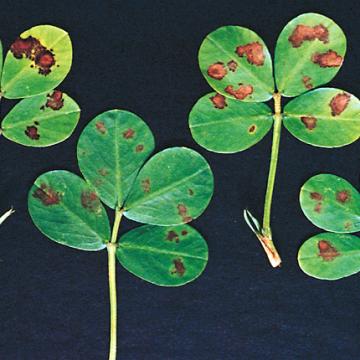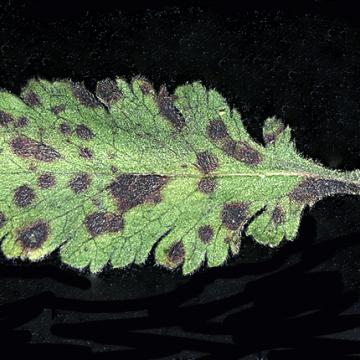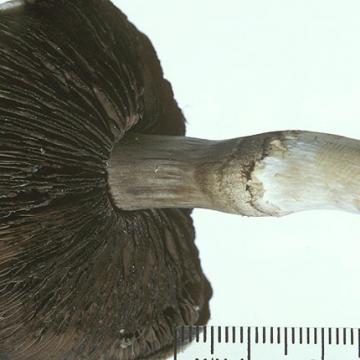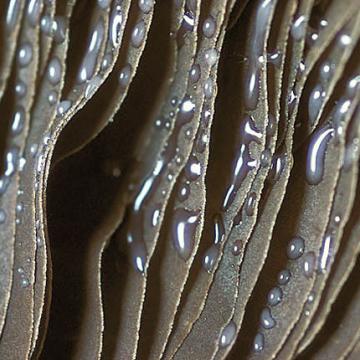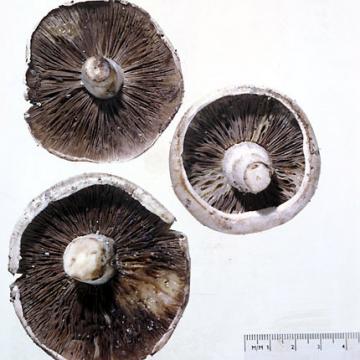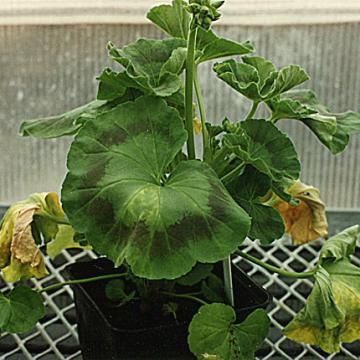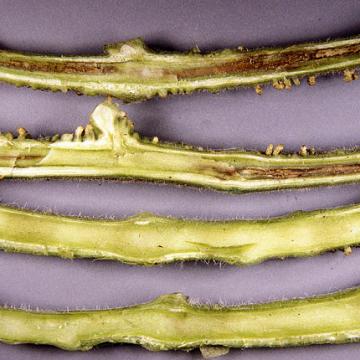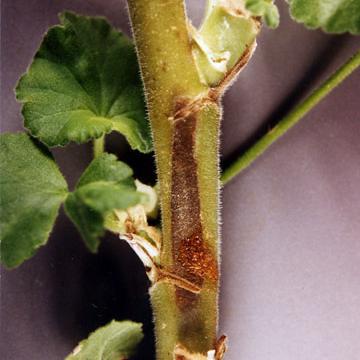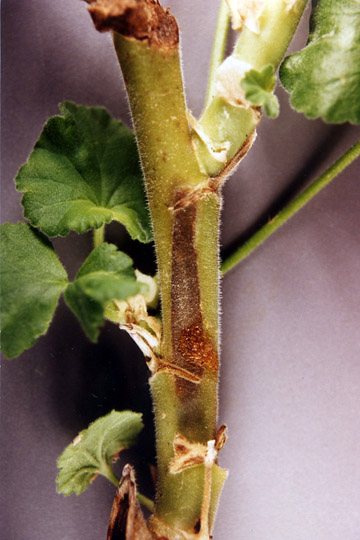DISEASE: Bacterial leaf spot
HOST: Laurel (California laurel)
Leaf with dark brown, angular spots.

Bacterial leaf spot | Laurel (California laurel)
DISEASE: Bacterial leaf spot
HOST: Laurel (California laurel) (Umbellularia californica)
PATHOGEN: Pseudomonas sp.
PATHOGEN SYNONYM: Pseudomonas lauracearum
SOURCE: W. Sinclair
DISEASE: Bacterial leaf spot
HOST: Peanut
The disease causes water-soaked lesions, particularly on upper leaf surfaces. Lesions enlarge and later display brown necrotic areas. Leaflets become chlorotic and shed prematurely.
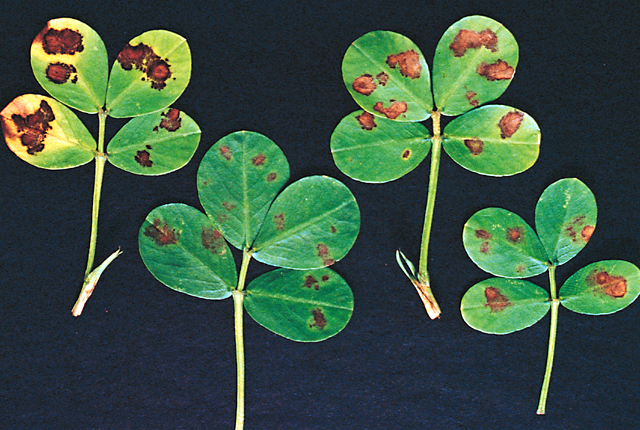
Bacterial leaf spot | Peanut
DISEASE: Bacterial leaf spot
HOST: Peanut (Arachis hypogaea)
PATHOGEN: Pseudomonas sp.
SOURCE: P. Subrahmanyam
DISEASE: Bacterial leaf spot
HOST: Verbena
Leaf with purple-brown necrotic spots.
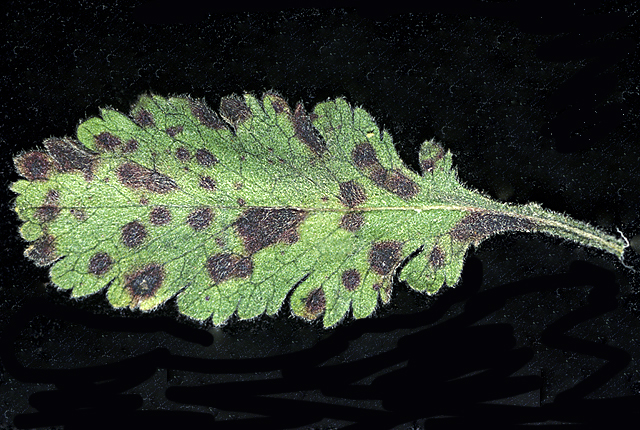
Bacterial leaf spot | Verbena
DISEASE: Bacterial leaf spot
HOST: Verbena (Verbena sp.)
PATHOGEN: Pseudomonas sp.
SOURCE: R. Raabe
DISEASE: Drippy gill
HOST: Mushroom
Drippy gill is characterized by small dark spots on gills with drops of bacterial ooze at the centers. Severe infection results in slimy areas and collapse of gills.
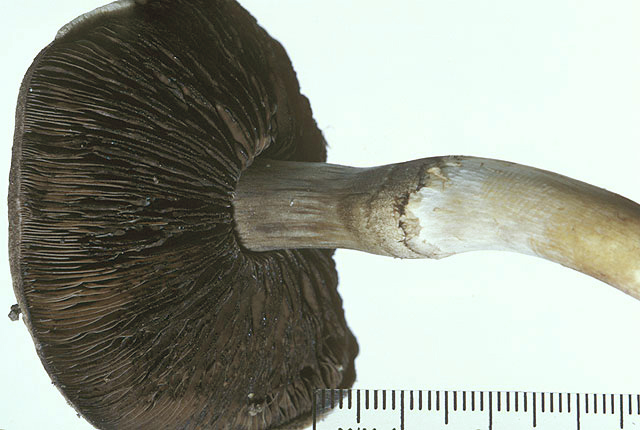
Drippy gill | Mushroom
DISEASE: Drippy gill
HOST: Mushroom (Agaricus campestris)
PATHOGEN: Pseudomonas agarici
SOURCE: J. Young
DISEASE: Drippy gill
HOST: Mushroom
Close-up of infected gills with bacterial ooze.
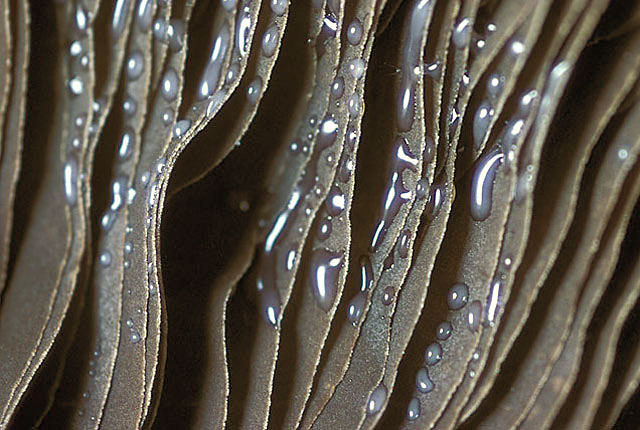
Drippy gill | Mushroom
DISEASE: Drippy gill
HOST: Mushroom (Agaricus campestris)
PATHOGEN: Pseudomonas agarici
SOURCE: J. Young
DISEASE: Drippy gill
HOST: Mushroom
Another view of small, dark spots on gills.
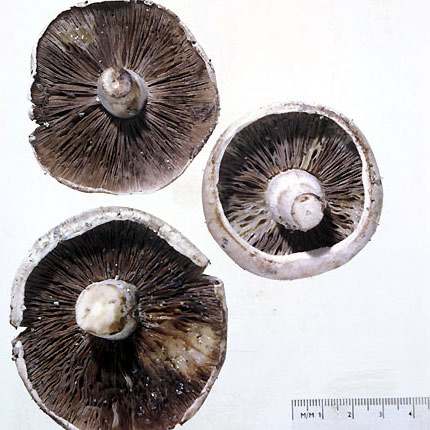
Drippy gill | Mushroom
DISEASE: Drippy gill
HOST: Mushroom (Agaricus campestris)
PATHOGEN: Pseudomonas agarici
SOURCE: J. Young
DISEASE: Pith necrosis
HOST: Geranium
Geranium with wilted, yellow necrotic leaves.
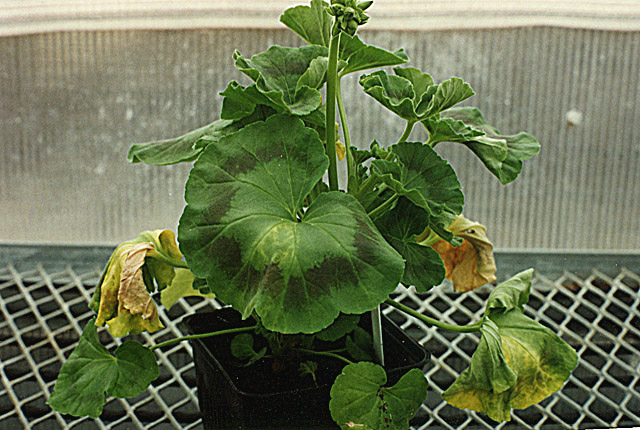
Pith necrosis | Geranium
DISEASE: Pith necrosis
HOST: Geranium (Pelargonium sp.)
PATHOGEN: Pseudomonas corrugata
SOURCE: A. Magyarosy, D. Thomas
DISEASE: Pith necrosis
HOST: Geranium
Pitted and hollow stems, one of the disease symptoms.
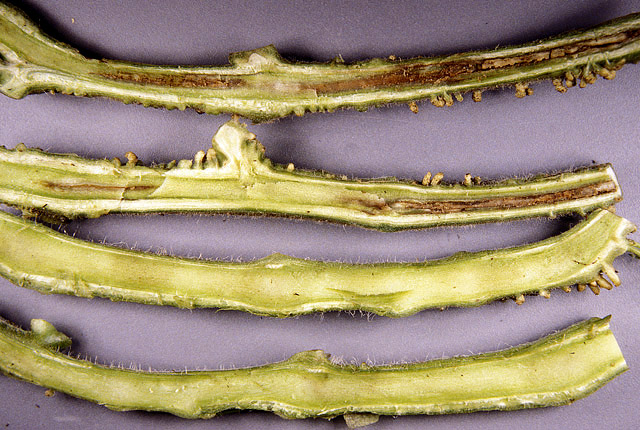
Pith necrosis | Geranium
DISEASE: Pith necrosis
HOST: Geranium (Pelargonium sp.)
PATHOGEN: Pseudomonas corrugata
SOURCE: A. Magyarosy, D. Thomas



